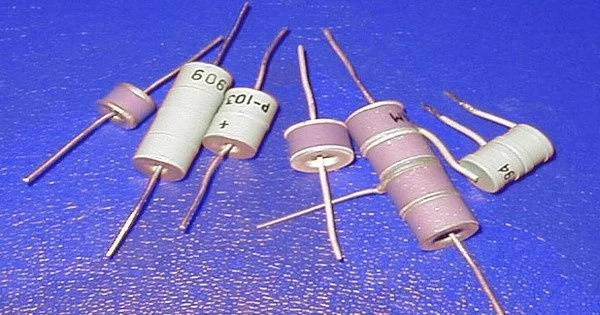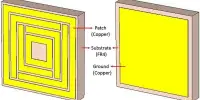A spark gap is an arrangement of two conducting electrodes separated by a gap filled with a gas such as air that allows an electric spark to pass between the conductors. A spark forms when the potential difference between the conductors exceeds the breakdown voltage of the gas within the gap, ionizing the gas and drastically reducing its electrical resistance.
A spark gap is a device used to produce a controlled electrical discharge or spark. It consists of two conducting electrodes separated by a small gap filled with a non-conductive medium, such as air or a specific gas. When a high voltage is applied across the electrodes, the electric field becomes strong enough to ionize the medium, creating a conductive plasma channel between the electrodes. This ionized channel allows current to flow, resulting in a spark.
An electric current then flows until the ionized gas path is broken or the current falls below a threshold known as the “holding current.” This usually happens when the voltage drops, but it can also happen when the heated gas rises, stretching out and then breaking the ionized gas filament. Usually, the action of ionizing the gas is violent and disruptive, often leading to sound (ranging from a snap for a spark plug to thunder for a lightning discharge), light, and heat.
Spark gaps were used historically in early electrical equipment, such as spark gap radio transmitters, electrostatic machines, and X-ray machines. Their most widespread use today is in spark plugs to ignite the fuel in internal combustion engines, but they are also used in lightning arresters and other devices to protect electrical equipment from high-voltage transients.
Spark gaps have been used in various applications, including early radio transmitters, ignition systems, and lightning arrestors. Here are a few examples of their uses:
- Ignition Systems: Spark plugs in internal combustion engines use a spark gap to create an electric spark, which ignites the air-fuel mixture in the engine’s cylinders. The spark ignites the mixture, initiating the combustion process and powering the engine.
- Lightning Arrestors: Spark gaps are employed in lightning protection systems to divert and safely dissipate the high voltages associated with lightning strikes. When lightning approaches, the voltage potential across the spark gap ionizes the air, providing a low-resistance path for the lightning current to travel safely to the ground.
- High-Voltage Switching: Spark gaps can be used as high-voltage switches in certain applications. When a sufficiently high voltage is applied across the electrodes, the spark gap conducts electricity, allowing current to flow. This property has been used in technologies such as pulsed power systems and large-scale electrical discharge experiments.
- Radio Transmitters: Early radio transmitters utilized spark gaps to generate electromagnetic waves. The rapid discharges across the spark gap produced oscillating electrical currents, which, when coupled with an antenna, emitted radio waves. However, spark gaps were later replaced by more efficient and controllable technologies like vacuum tubes and solid-state devices.
It’s worth noting that while spark gaps have historical significance and continue to have niche applications, they are not commonly used in modern electronic systems. Advancements in semiconductor technology and more precise control mechanisms have led to the development of more efficient and reliable electronic components.
















